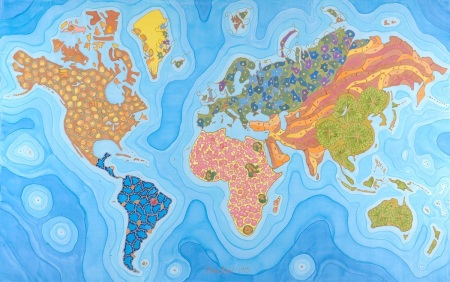This “Histomap,” created by John B. Sparks, was first printed by Rand McNally in 1931. It is now housed by The David Rumsey Map Collection and they, thankfully, host a fully zoomable version here online.
This giant, ambitious chart fit neatly with a trend in nonfiction book publishing of the 1920s and 1930s: the “outline,” in which large subjects were distilled into a form comprehensible to the most uneducated layman.
The 5-foot-long Histomap was sold for $1 and folded into a green cover, which featured endorsements from historians and reviewers.
* “World” being highly subjective. History being “4,000 years”.


